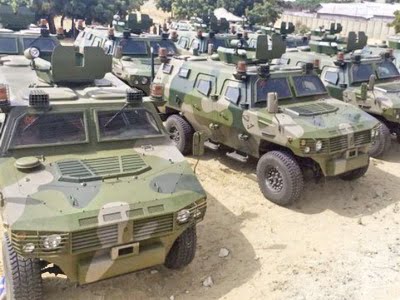Over the last decade, African arms imports dropped by 22 per cent, according to the Stockholm International Peace Research Institute (SIPRI), but Algeria, Morocco and Nigeria continued to order large quantities of weapons and equipment.
According to an article published by our partner defenceWeb, the trends were discussed leveraging a recent SIPRI report.
In its Trends in International Arms Transfers 2017 fact sheet released this week, SIPRI said that African arms sales dropped 22% between 2008-12 and 2013-17. Much of the hardware that was supplied went to Algeria (52% of African arms imports), Morocco (12%) and Nigeria (5.1%).
“Major arms play an important role in the military operations by sub-Saharan African states, although, due to lack of resources, procurement typically involves small numbers of mainly relatively low-end weapons,” SIPRI said.
States in sub-Saharan Africa received 32% of total African imports in 2013–17. The top five arms importers in sub-Saharan Africa were Nigeria, Sudan, Angola, Cameroon and Ethiopia. Together, they accounted for 56% of arms imports to the subregion. Nigeria’s arms imports grew by 42 % between 2008–12 and 2013–17, SIPRI noted.
Russian arms exports to Africa fell by 32% compared with 2008–12, but despite the decrease, Russia accounted for 39% of total imports to the region. Algeria received 78% of Russia’s arms transfers to Africa in 2013–17.
China’s arms exports to Africa rose by 55% between 2008–12 and 2013–17, and its share of total African arms imports increased from 8.4% to 17%. “A total of 22 sub-Saharan African countries procured major arms from China in 2013–17, and China accounted for 27% of sub-Saharan African arms imports in that period (compared with 16% in 2008–12). In North Africa, China became an important supplier to Algeria in 2013–17, with deliveries including three frigates and artillery,” SIPRI reported.
The United States accounted for 11% of arms exports to Africa in 2013–17 – the transfers were mainly small batches of weapons and included eight helicopters for Kenya and five for Uganda, which were supplied as US military aid. In 2013–17 Kenya—which is fighting al-Shabab on its own territory and in Somalia— acquired 13 transport helicopters, 2 second-hand combat helicopters, 65 light armoured vehicles and a small number of self-propelled howitzers.
SIPRI lists Egypt’s acquisitions as falling under the Middle East – if these are included in the continent’s statistics they push up Africa’s imports significantly as arms imports by Egypt grew by 215% between 2008–12 and 2013–17.
SIPRI noted that the US has been Egypt’s main arms supplier since the late 1970s, and accounted for 45% of Egypt’s arms imports in 2008–12. “However, between 2013 and 2015 the US halted deliveries of certain arms, in particular combat aircraft, to Egypt. In 2014 Egypt signed major arms deals with France, and deliveries started in 2015. As a result, France accounted for 37 % of Egypt’s arms imports in 2013–17 and overtook the USA to become the main arms supplier to Egypt for that period. This was despite the fact that the USA ended its restrictions in 2015 and increased its overall arms supplies to Egypt by 84% between 2008–12 and 2013–17.”
Globally, SIPRI in its latest report said that the volume of international transfers of major weapons in 2013–17 was 10% higher than in 2008–12, a continuation of the upward trend that began in the early 2000s.
The five largest exporters in 2013–17 were the United States, Russia, France, Germany and China. The United States in 2013-17 had a 34% share of the global market, followed by Russia (22%), France (6.7%), Germany (5.8%) and China (5.7%).
The USA supplied major arms to 98 states in 2013–17. Exports to states in the Middle East accounted for 49 per cent of total US arms exports in that period. “Based on deals signed during the Obama administration, US arms deliveries in 2013–17 reached their highest level since the late 1990s,” said Dr Aude Fleurant, Director of the SIPRI Arms and Military Expenditure Programme. “These deals and further major contracts signed in 2017 will ensure that the USA remains the largest arms exporter in the coming years.”
The five largest importers were India, Saudi Arabia, Egypt, the United Arab Emirates (UAE) and China. Most states in the Middle East were directly involved in violent conflict in 2013–17 and consequently arms imports by states in the region increased by 103% between 2008–12 and 2013–17, and accounted for 32% of global arms imports in 2013–17.
“Widespread violent conflict in the Middle East and concerns about human rights have led to political debate in Western Europe and North America about restricting arms sales,” said Pieter Wezeman, Senior Researcher with the SIPRI Arms and Military Expenditure Programme. “Yet the USA and European states remain the main arms exporters to the region and supplied over 98% of weapons imported by Saudi Arabia.”
SIPRI said the flow of arms to the Middle East and Asia and Oceania increased between 2008–12 and 2013–17, while there was a decrease in the flow to the Americas, Africa and Europe.
Republished with permission of our partner defenceWeb.


